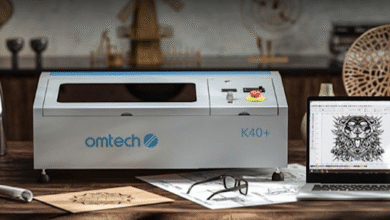What Is the Best Way to Translate Technical Documents? Best Practices and Tips

In a world increasingly driven by technology and global collaboration, the demand for accurately translated technical documentation has never been higher. Whether it’s software manuals, user guides, patents, safety protocols, or engineering specifications, translating these materials requires more than just linguistic skills—it requires domain-specific expertise and a commitment to precision.
So, what is the best way to translate technical documents? This guide dives into the technical document translation best practices, outlining proven strategies, key challenges, and useful tips to ensure your translations are accurate, reliable, and globally effective.
Why Accurate Technical Translation Matters
Technical documents play a critical role in conveying essential instructions, ensuring product safety, maintaining compliance with legal standards, and supporting global user adoption. A poorly translated manual can lead to product misuse, customer dissatisfaction, or even legal liability. That’s why technical translation isn’t just a matter of language—it’s a matter of accuracy, clarity, and context.
Key Challenges in Technical Document Translation
Before discussing best practices, it’s essential to recognize the unique hurdles that technical translators face:
1. Complex Terminology
Technical documents are loaded with jargon, acronyms, and field-specific vocabulary. Translators must be deeply familiar with both the source and target language’s technical lexicon.
2. Consistency Across Documents
For companies with large product suites or multiple releases, terminology consistency is critical. A single term might appear in hundreds of places, and inconsistencies can confuse users or create functional misunderstandings.
3. Regulatory and Compliance Issues
In industries like pharmaceuticals, aerospace, or finance, translations must comply with local regulations. This adds a layer of legal scrutiny to the translation process.
4. Formatting and Visual Elements
Technical documents often contain charts, diagrams, tables, and code snippets. Translations must preserve formatting integrity while adapting content appropriately.
Technical Document Translation Best Practices
Here’s a comprehensive list of technical document translation best practices that professionals and organizations should follow:
1. Work with Subject Matter Experts (SMEs)
Language proficiency alone isn’t enough. SMEs understand industry-specific concepts and terminology, ensuring accurate translations. Collaborate with translators who have backgrounds in your field—whether that’s engineering, IT, law, or medicine.
2. Use Translation Memory (TM) Tools
Translation memory tools store previously translated segments, helping maintain consistency and reducing time and cost for future projects. Tools like SDL Trados, MemoQ, or Memsource are widely used to speed up workflows and improve uniformity.
3. Create and Maintain a Terminology Glossary
Develop a bilingual or multilingual glossary that standardizes the translation of key terms, abbreviations, and product names. This glossary should be shared across all translation teams and updated regularly.
4. Localize, Don’t Just Translate
Effective technical document translation requires localization—adapting content to the cultural and regional norms of your target audience. Units of measure, date formats, currency, and idiomatic expressions should be adjusted accordingly.
5. Use Style Guides
Style guides provide rules for grammar, tone, punctuation, and formatting. Creating a style guide for translators ensures consistency in how content is rendered, especially for branding, voice, and tone.
6. Ensure Clear Source Text
The clarity of the source document has a huge impact on the quality of the translation. Write your technical documents in plain, unambiguous language. Avoid idioms, cultural references, or humor that may not translate well.
7. Conduct In-Country Reviews
After translation, have a native speaker or local team review the content. This ensures that the final document feels natural and accurate to the intended audience, catching any errors or misinterpretations.
8. Adopt a Review and QA Process
Like software, translation requires a quality assurance phase. Use a multi-step process: translation → editing → proofreading → final QA. This layered review ensures accuracy, completeness, and style adherence.
9. Plan for Layout and DTP (Desktop Publishing)
Text length often changes during translation—German and French, for example, can expand 20–30% compared to English. Plan for this in your document layout and use DTP tools to reformat translated files appropriately.
10. Secure Confidentiality
Many technical documents include proprietary or sensitive data. Use non-disclosure agreements (NDAs) and secure translation platforms to protect your information throughout the translation process.
Tips for Improving Translation Outcomes
Beyond best practices, here are some actionable tips that help ensure successful technical translations:
Tip 1: Prepare a Translation Brief
Give your translator context, such as the purpose of the document, target audience, preferred tone, and specific formatting requirements. A detailed brief helps align expectations and deliver a more accurate final product.
Tip 2: Invest in Translator Training
If you’re working with in-house translators or a dedicated vendor, provide training materials, product demos, or onboarding sessions to deepen their understanding of your business.
Tip 3: Automate Where Appropriate—but with Caution
Machine translation (MT) tools like DeepL or Google Translate can offer speed and cost advantages. However, they should only be used with human post-editing for technical documents to ensure accuracy and clarity.
Tip 4: Version Control Matters
Ensure that translators are always working from the most up-to-date source documents. A robust version control system prevents outdated or duplicate content from being translated erroneously.
Tip 5: Pilot and Test Translations
Start with a pilot project before scaling translation across entire product suites. Gather feedback, run usability tests, and refine your workflow before full implementation.
Industries Where Technical Translation Is Critical
Different industries have different standards and risks, making precise technical translation non-negotiable. Here are some of the most translation-sensitive sectors:
- Software and IT: User manuals, API documentation, UI/UX strings.
- Healthcare and Life Sciences: Clinical trial documents, medical device instructions.
- Manufacturing and Engineering: Safety data sheets, maintenance guides.
- Legal and Finance: Compliance documents, patents, audit reports.
- Aerospace and Defense: Flight manuals, operational protocols.
Each of these industries may also require certification or legal validation of translations, depending on local regulations.
Measuring the Success of Technical Translations
To ensure your translation efforts are paying off, consider the following performance indicators:
- User Comprehension: Are readers understanding and applying the content correctly?
- Error Rates: Are there any increases in product misuse, customer support tickets, or compliance issues?
- Turnaround Time: How quickly can you go from source document to fully localized versions?
- Cost Efficiency: Are TM tools and glossaries helping reduce costs over time?
- Market Feedback: Are regional teams and customers satisfied with the translations?
Collecting this data helps refine your translation strategy and justify continued investment in quality processes.
Final Thoughts
Technical document translation is not a plug-and-play task—it’s a high-stakes operation that demands planning, precision, and the right partners. By following these technical document translation best practices, you can ensure your documents are globally accessible, professionally accurate, and locally relevant.
The key takeaway? Treat translation not as an afterthought but as a core part of your technical publishing process. Your global audience—and your bottom line—will thank you.




